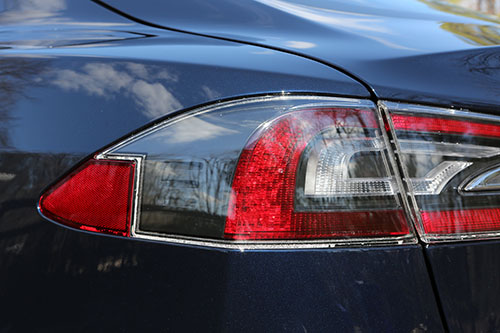EV Tips - Mazimizing Range with a Tesla Model S
 Once I felt comfortable with the basic operations of our Tesla Model S, my first concern focused on maximizing range. It wasn’t that I needed to push the car beyond the EPA’s 269 miles per charge range, but I wanted to know if I needed it, how to get it.
Once I felt comfortable with the basic operations of our Tesla Model S, my first concern focused on maximizing range. It wasn’t that I needed to push the car beyond the EPA’s 269 miles per charge range, but I wanted to know if I needed it, how to get it.
The first aspect of range to be aware of is that the Model S can charge via two settings: standard and range. The ideal range under standard is 240 miles per charge and 300 miles per charge when the range option is selected. While you could charge it on range every day, if you didn’t need it, you would be unnecessarily shortening the lifespan on your battery pack. Therefore, on a daily basis it is best to charge using the standard session unless it is needed. All of our charging was done on the standard setting. So all of my findings and range estimates were based on an ideal range of 240 miles and extrapolated to 300 miles.
Let’s start with some basic numbers. To achieve an ideal range of 300 miles on a fully charged 85 kwh battery you would need to average 283 Wh/mile. My experience when starting with a cold (40 degree) was a significant efficiency penalty of about 50 Wh/mile. After about 5 miles of driving (25-40mph) my efficiency improved to below 300 Wh/mile and by the time I drove 15 or more miles I was driving with a better than ideal efficiency.
The drop in inefficiency is caused by a few factors. If you have climate control on and the cabin is cold, you expend energy warming it up. Second, if the battery is not conditioned, the car automatically heats it up so it can operate at ideal efficiency. Finally, when the battery isn’t conditioned, the regenerative braking that occurs when you lift your foot off the accelerator (we can’t call it the gas pedal) isn’t as effective.
While you could heat your garage, that seems like a complete waste and counterproductive to the goal of efficiency. Savvy Model S owners don’t have to accept this drop in efficiency by employing a few strategies. The first is as simple as can be, passive heat. If there is a reasonable amount of sun shining, even on a cold day, the Model S will warm up nicely when parked in the sun. I found the internal ambient temperature rose to close to 70 on a 40 degree day. This saves energy on both warming the car’s cabin and heating the battery pack.
Another option is to schedule your charge to complete just as you are going to start your drive for the day. You can do this two ways. If you have the new firmware (V 4.3) you can schedule the start time so that the charging completes in time for your commute. This may take a little care in that charging slows as you approach a full charge. However, as long as you don’t need a full range charge the following day, experimenting doesn’t have much of a downside.
If you are without V 4.3 of the firmware, or you want to test your math skills, you can time your charge by modifying the current. Lowering the current by 50% will double your charging time. Break out your basic algebra and you are set.
When you don’t think ahead, you still have an option. You can start charging back up by flipping the charging mode from standard to range for 15-20 minutes. Couple this with a low current charge and you are all set.
